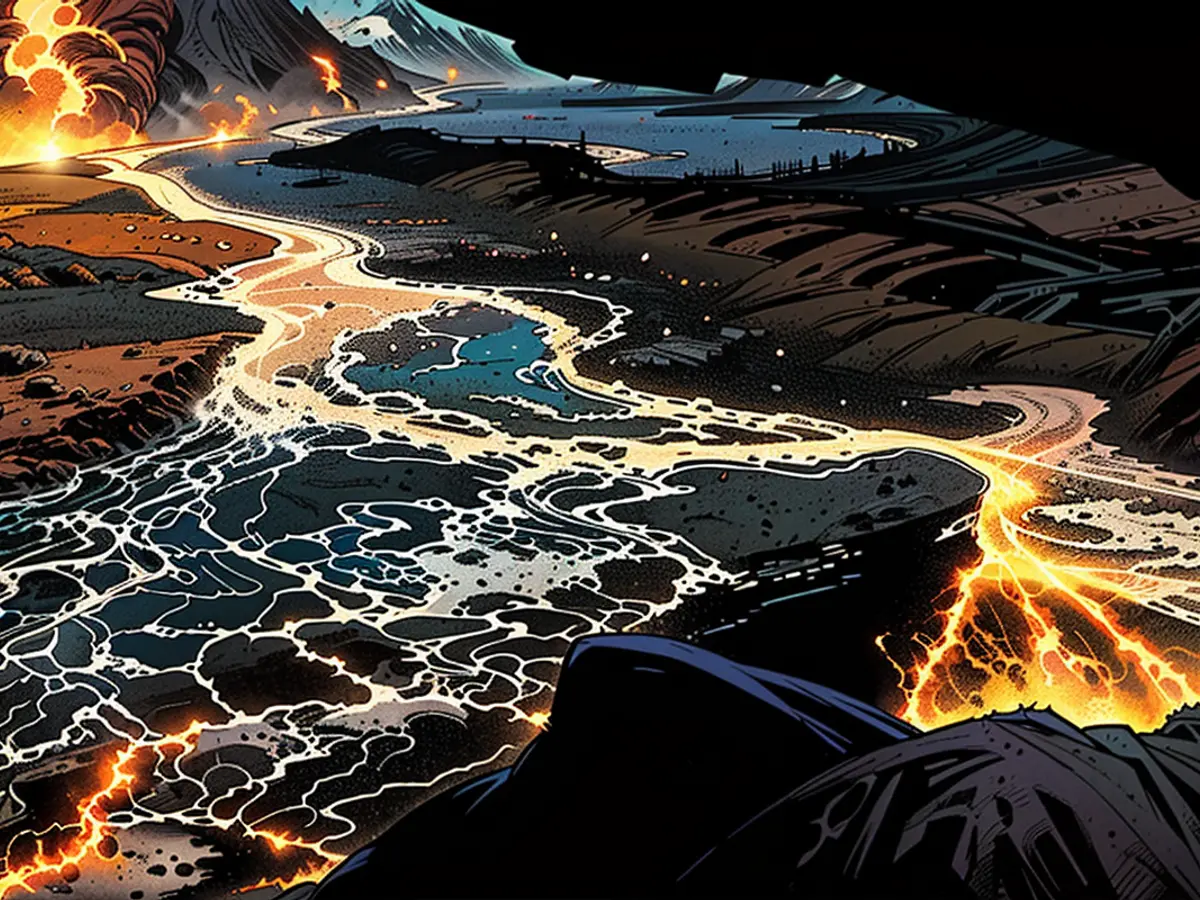A fresh volcanic explosion occurred on the Reykjanes Peninsula, Iceland.
On the Reykjanes peninsula of Iceland, a volcanic eruption has happened for the sixth time since December. "An eruption has commenced at Sundhnuksgigaröd," the Icelandic Meteorological Office (IMO) declared during the night on Friday.
Similar to the past events, an eruption initiated at Sundhnuksgigaröd on Thursday evening at 21.26 local time (23.26 CET), following a string of earthquakes, including one measuring 4.0 in magnitude. The coastal town of Grindavik required evacuation, a practice it had to endure in previous eruptions.
Night-vision footage demonstrated orange lava coursing through a lengthy fissure in the earth and smoke ascending into the atmosphere. Initially, the IMO predicted the crack's length to be 1.4 kilometers. However, within 40 minutes, the crack expanded to stretch 3.9 kilometers wide.
On Friday morning, the IMO reported a second fissure forming north of the initial one. Regardless, the vast majority of the volcanic activity remained concentrated on the initial crack.
The evacuation of Grindavik proceeded smoothly, as detailed by the chief of the Sudurnes police region, Ulfar Ludviksson, in discussions with Icelandic media outlets. He stated that close to 22 or 23 houses remained inhabited in Grindavik. The majority of the town's over 4,000 residents had abandoned their homes in November, and only a select few had returned to live there permanently since then.
The Reykjanes peninsula, where the recent volcanic eruption occurred, is known for experiencing eruptions since December. Despite the ongoing evacuation of Grindavik, a few permanent residents still live near the initial fissure on the peninsula.








